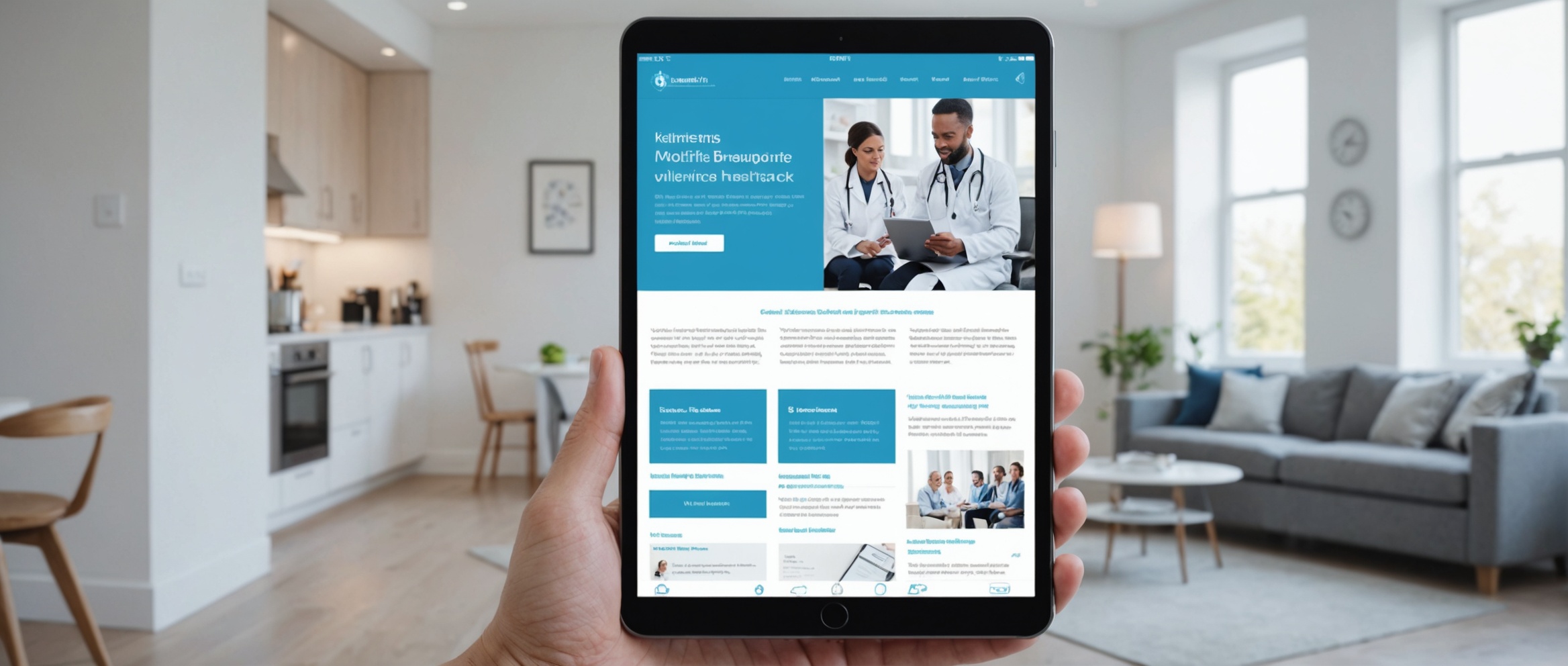Best Practices for Healthcare Digital Marketing in a Post-Pandemic World
The COVID-19 pandemic has significantly transformed the landscape of healthcare marketing. With the abrupt shift towards digital transformation, healthcare providers have had to rapidly adapt their marketing strategies. In a post-pandemic world, it’s crucial to implement effective and updated digital marketing practices to maintain patient engagement and trust. This article explores best practices for healthcare digital marketing that cater to the evolving needs of patients in a post-pandemic era, ensuring that providers can successfully navigate this new landscape.
Reevaluating Your Digital Marketing Objectives

Aligning with New Healthcare Trends
Understanding the new trends in healthcare is imperative for setting your marketing objectives. The widespread adoption of telehealth services and the growing demand for personalized patient experiences require a reevaluation of what your marketing goals should be. Telehealth has become a vital component in patient care, and incorporating it into your marketing strategy can enhance patient outreach and satisfaction.
Setting SMART Goals
Defining your marketing objectives using the SMART criteria—Specific, Measurable, Achievable, Relevant, and Time-bound—ensures that your goals are clear and attainable. This structured approach not only helps in tracking progress but also in adapting strategies based on performance metrics, making your marketing efforts more effective.
Enhancing Website User Experience (UX)

Mobile-First Design
A mobile-first design is essential in today’s digital age, particularly for healthcare websites. With an increasing number of users accessing healthcare information via smartphones, ensuring that your website is mobile-friendly enhances user accessibility and engagement. Best practices include responsive layouts, easy navigation, and fast loading times.
Easy Navigation and Accessibility Features
Clear menus, structured content, and accessibility features such as screen reader compatibility are crucial for ensuring all users, including those with disabilities, can navigate your website effortlessly. A seamless user experience can significantly improve patient interaction and satisfaction.
Considering these improvements, here is a comparison table illustrating the benefits of enhancing website UX:
FeatureBenefitMobile-First DesignIncreases mobile user engagement and satisfactionClear NavigationImproves usability and reduces bounce rateAccessibility FeaturesMakes the website accessible to all users, including those with disabilities
Investing in Quality Content and SEO
Creating Valuable and Relevant Content
Quality content is the cornerstone of effective healthcare digital marketing. Providing valuable and relevant information through articles, blogs, and patient education materials can establish your credibility and authority. Content should be accurate, well-researched, and tailored to meet the needs of your target audience.
On-Page and Off-Page SEO Strategies
Search Engine Optimization (SEO) is vital for increasing your website’s visibility. Effective on-page strategies include keyword optimization, meta tags, and high-quality content, while off-page strategies involve building backlinks and enhancing domain authority. Together, these strategies can significantly improve your search engine rankings, driving more organic traffic to your site.
Leveraging Social Media and Community Engagement
Choosing the Right Platforms
Selecting the appropriate social media platforms is crucial for maximizing your outreach efforts. Different platforms cater to varying demographics, so it’s important to choose those that best align with your target audience. Platforms like Facebook, Instagram, and LinkedIn can be particularly effective in reaching a broad audience.
Building Community Trust and Engagement
Regular updates, interactive content, and authentic communication can build trust with your audience. Engaging with patients through social media campaigns and sharing success stories can foster a sense of community and loyalty. This not only enhances patient satisfaction but also bolsters your brand’s reputation.
Here are two key strategies for social media engagement:
- Regularly posting informative and engaging content to keep your audience updated and involved.
- Running interactive campaigns like Q&A sessions, polls, or live videos to foster direct interaction with patients.
Utilizing Data Analytics to Drive Decisions
Tracking Key Performance Indicators (KPIs)
Data analytics play a crucial role in measuring the success of your digital marketing efforts. Tracking KPIs such as website traffic, conversion rates, and patient engagement metrics provides insights into what’s working and what needs improvement. These metrics help in making informed decisions and optimizing your strategies.
Regular Review and Adaptation
Regularly reviewing performance data allows for timely adjustments to your marketing strategies. Analyzing trends and patterns can reveal opportunities for improvement and innovation, ensuring that your marketing efforts remain effective and relevant in the ever-evolving digital landscape.
Important Ethical and Compliance Considerations
Following HIPAA Guidelines
Compliance with the Health Insurance Portability and Accountability Act (HIPAA) is non-negotiable for healthcare providers. Ensuring patient data privacy and security in your digital marketing efforts is critical. Any breach of patient confidentiality can have serious legal and reputational consequences.
Transparency and Ethical Marketing
Transparency in your marketing practices builds credibility and trust. Honest and clear communication about treatments, services, and outcomes ensures that patients are well-informed and confident in their healthcare choices. Avoiding misleading claims and providing accurate information is essential for ethical healthcare digital marketing.
Ensuring ethical and compliant marketing practices involves:
- Adhering to HIPAA guidelines to protect patient information and maintain privacy.
- Providing truthful and transparent content to foster trust and credibility with patients.
Conclusion
In summary, adapting to the shifting landscape of healthcare digital marketing in a post-pandemic world requires a multifaceted approach. By reevaluating your objectives, enhancing user experience, investing in quality content and SEO, leveraging social media, utilizing data analytics, and adhering to ethical practices, you can effectively reach and engage with patients. Embracing these best practices will not only improve patient satisfaction but also enhance your organization’s reputation and success in the digital age.
FAQ
Q1: Why is mobile-first design crucial for healthcare websites post-pandemic?
A1: Mobile-first design ensures that your website is fully functional and accessible on all devices. Given the increased reliance on mobile devices for healthcare information and services, a mobile-first approach enhances user experience and engagement.
Q2: How can healthcare providers build trust through social media?
A2: Healthcare providers can build trust by engaging regularly with their audience through informative content, addressing concerns, sharing patient testimonials, and maintaining a transparent communication channel.
Q3: What are some key KPIs for healthcare digital marketing?
A3: Important KPIs include website traffic, patient engagement metrics (like time spent on site and interaction rate), conversion rate, social media engagement, and the ROI of marketing campaigns.
Q4: Why is content accuracy crucial in healthcare marketing?
A4: Content accuracy is vital because patients rely on this information to make health-related decisions. Providing trustworthy, accurate content strengthens your authority and credibility in the healthcare field.
Q5: What ethical considerations should be kept in mind for post-pandemic healthcare marketing?
A5: It’s crucial to maintain patient data privacy by adhering to HIPAA regulations and ensuring all marketing communications are transparent, honest, and free from misleading claims.





